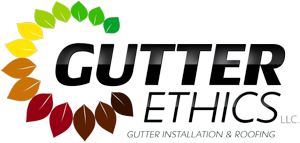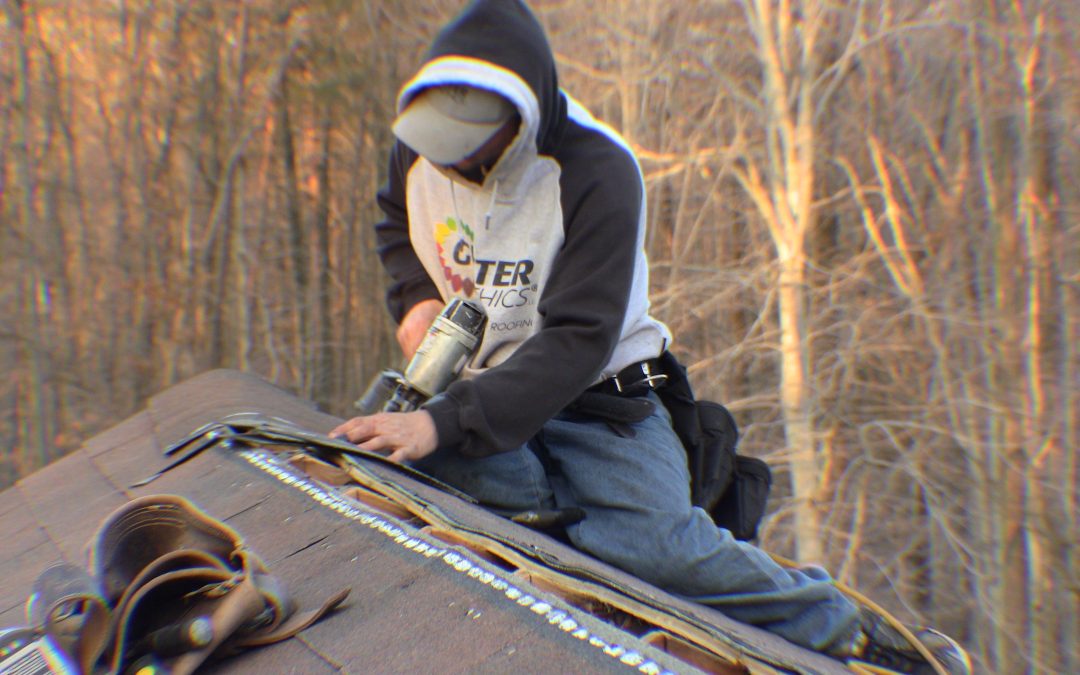How to Deal with Roof Damage After a Storm in Northern Virginia
Living in Northern Virginia means experiencing a range of weather conditions throughout the year, from heavy rain to snowstorms, high winds, and even hail. Storms can cause significant damage to your roof, and it’s crucial to know how to handle the situation swiftly to minimize damage and avoid expensive repairs. At Gutter Ethics, we specialize in both roofing and gutter services, ensuring that you know how to deal with roof damage after a storm in Northern Virginia.
In this guide, we’ll walk you through the steps of how to deal with roof damage after a storm in Northern Virginia, including how to assess the damage, what to do immediately, and how to find the right professionals to fix your roof.
1. Assess the Damage Safely
After a storm, your first instinct might be to rush outside and check the damage. However, safety should always be your top priority. Storm damage can leave behind hazardous conditions such as debris, fallen branches, or even power lines. Before heading outside to inspect your roof, make sure the area is safe.
- Check for Hazards: Avoid areas where downed power lines may be present. If you suspect any live wires near your home, contact your local utility company immediately.
- Inspect from the Ground: Start by checking your roof from the ground using binoculars. Look for visible signs of damage, such as missing shingles, curled edges, sagging spots, or debris on the roof.
- Look for Water Damage Inside: Check the interior of your home for signs of water intrusion. Water stains on the ceiling, damp walls, or damp insulation in the attic can all indicate roof leaks that may need immediate attention.
2. Document the Damage
Once you’re sure it’s safe to inspect your roof, document all damage thoroughly. This will be helpful for both insurance claims and working with roofing professionals to assess the repairs needed. Take clear, close-up photos of any visible damage, such as:
- Missing or damaged shingles
- Cracked or dented roof materials
- Broken gutters or downspouts
- Damage to the roof’s structure, such as sagging or holes
Additionally, take photos of interior damage (e.g., ceiling leaks or water stains) to give your insurance adjuster a complete picture of the storm’s impact.
3. Contact Your Insurance Company
Once you’ve documented the damage, your next step should be to contact your insurance company. Many homeowners’ insurance policies cover roof repairs caused by storms, but it’s essential to report the damage as soon as possible. When speaking with your insurance adjuster, keep the following in mind:
- Be Honest and Detailed: Provide as much detail as possible about the damage and your initial assessment. Share the photos you took during the inspection.
- Ask Questions About Coverage: Find out what’s covered under your policy. Some policies may cover specific types of storm damage (e.g., wind or hail), while others may have exclusions.
- Request an Inspection: Ask your insurance company if they will send an adjuster to inspect the roof. Some insurers may require this before approving repairs.
4. Make Temporary Repairs (If Necessary)
If your roof is leaking or compromised in a way that could lead to further damage, it’s important to make temporary repairs right away to protect your home. If you can do so safely, follow these steps:
- Cover Leaks with a Tarp: If there’s visible damage causing leaks inside the house, use a tarp to cover the damaged area on the roof. Secure the tarp with ropes or heavy-duty staples to prevent further water from entering your home.
- Secure Loose Shingles: If shingles are loose but not fully detached, you can use roofing nails or a strong adhesive to temporarily hold them in place until the repair professional arrives.
- Clear Debris: Remove any fallen branches, leaves, or debris from the roof to prevent further obstruction or damage to the gutters and roof system.
It’s important to remember that these are temporary solutions. While they can help protect your home in the short term, you’ll need a professional roofer to complete the necessary repairs.
5. Call a Professional Roofing Contractor
While DIY fixes may work in an emergency, storm damage should always be evaluated and repaired by a professional roofing contractor. A professional can perform a thorough roof inspection, identify issues that may not be immediately visible, and provide permanent solutions. At Gutter Ethics, we offer roof inspection and repair services tailored to Northern Virginia homeowners. Here’s why you should hire a professional:
- Expertise: A licensed roofing contractor has the experience to spot hidden damage that could lead to future problems. They can check for structural issues, leaks, and damage beneath the roof surface.
- Insurance Assistance: Many roofing contractors, like us at Gutter Ethics, work directly with your insurance company to ensure that you get the repairs you need without out-of-pocket expenses. We can help you navigate the claims process to get the best possible outcome.
- Safety: Roofing is a dangerous job, and it’s not worth risking your safety by trying to repair the roof yourself. Professionals have the proper equipment and training to work safely at height.
6. Plan for Roof Repairs or Replacement
After a storm, the extent of the damage may vary. For minor issues, repairs may suffice, but in some cases, extensive damage may require roof replacement. Here’s what to consider:
- Minor Damage: For things like a few missing shingles, leaks, or minor cracks, a roof repair is often sufficient to restore your roof’s integrity. These types of repairs are typically covered by homeowners’ insurance.
- Major Damage: If the storm caused extensive damage to your roof, including large sections of missing shingles, leaks, or structural damage, a roof replacement may be necessary. In Northern Virginia, where the weather can vary drastically, it’s crucial to ensure your roof is in top condition after any storm.
7. Prevent Future Storm Damage
Once your roof is repaired or replaced, consider taking steps to prevent future storm damage:
- Upgrade Your Roof: Consider investing in storm-resistant roofing materials such as impact-resistant shingles, which can withstand hail and wind more effectively.
- Maintain Your Roof Regularly: Regular roof inspections and maintenance can help you identify potential problems before they become major issues. Clean gutters, check for leaks, and ensure your roof is in good condition.
- Trim Trees: Overhanging branches can be a major hazard during storms. Keep trees trimmed to prevent limbs from falling on your roof.
Conclusion: Dealing with Roof Damage in Northern Virginia
Dealing with roof damage after a storm in Northern Virginia can be stressful, but by following the right steps, you can minimize the impact and ensure your home stays safe. Assess the damage carefully, document everything, and reach out to your insurance company. Contacting a professional roofer like Gutter Ethics ensures that you get expert help with repairs or roof replacement. Regular maintenance and upgrades can also reduce the chances of severe damage in the future.
If you’re ready to take the stress out of gutter maintenance, contact us today. Let us show you why we’re the best in the business!

